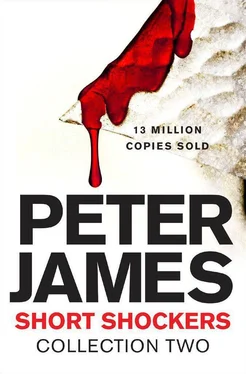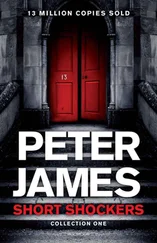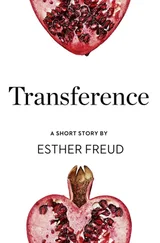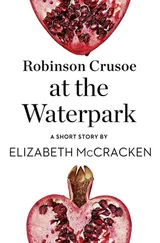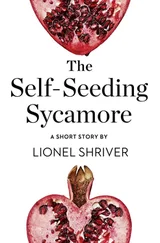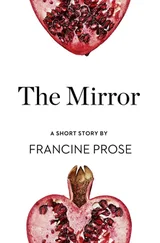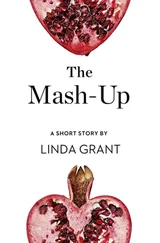I told him we were both sort of lapsed Anglicans. I’d been confirmed as a child, and so had Kerry. But neither of us had had much time for religion since, although both of us had had parental pressure to have little Darren confirmed.
The Sergeant said, ‘The only thing I can suggest is that you contact your local vicar in the morning and see what he has to say about this, Mr and Mrs Wilson.’
We stayed the night in our kind neighbours’ spare room, and in the morning ventured home. All was quiet there, back to normality. We packed some of our belongings into a suitcase and moved, temporarily, to Kerry’s parents’ home in Surbiton. Later that morning we drove to see our vicar — who we had never met before. He was a young clergyman, who although a tad sceptical at first, listened intently to our story. While we were sitting in his house, he phoned the police and asked to speak to the Sergeant who had attended last night, and was told he was currently off duty and to call back that evening.
At around 7 p.m. he called us at Kerry’s parents’ home, sounding shaken, telling us the Sergeant had verified our story, and that he was going to contact his diocesan Minister of Deliverance, Francis Wells, for advice.
A week passed, during which we heard nothing, and Kerry and I began to doubt our sanity, despite the fact that the two police officers had witnessed what we had witnessed. Then we received a phone call from Francis Wells, asking if he could come and see us at our house. He was insistent that both of us should be there.
We did some research on him, and learned that he was a highly respected clergyman, with particular interest in the paranormal, and came from an academic background. Both his parents were medics, and he had achieved a double first in psychology from Oxford. He seemed exactly the right person, with a practical mindset, to investigate the phenomena we had encountered, and Kerry and I felt reassured.
Kerry drove us to the house in my van, but refused to go in. Although it was the middle of the day, I was also too scared to go in alone. We waited outside, and after about twenty minutes, a bright red Alfa Romeo saloon pulled up, and out clambered a very good-looking man in his early thirties, dressed in a business suit, with a very pleasant and gentle demeanour.
Francis Wells was far from what we had been expecting — perhaps a priest in robes, holding a bell, book and candle, like something out of The Exorcist . He was so normal, so ordinary, and warm-hearted, instantly putting us at our ease and expressing his deepest sorrow at our loss. He asked if he could go inside and take a look at where the apparitions had appeared.
We agreed, although neither Kerry nor I would go further than the front room. We sat on the sofa, feeling very uncomfortable being back in the house, while he went upstairs. After what seemed an eternity, he came down and sat in a chair opposite us. Kerry found the strength to make us all a coffee and when she had handed out our cups, together with a plate of biscuits, he told us his findings, smiling benignly at us, as if to reassure me and my wife that we were not bonkers, and speaking in a soft, gentle voice.
He started by offering us prayers, and did not seem at all offended when we thanked him but told him that both of us had a problem with religion. He was totally understanding. ‘That is absolutely fine,’ he said. He sipped some coffee then continued. ‘Well, Geoff and Kerry, I’ve just been upstairs and all seems quiet, for now. I’ve been researching into the background of your home, and I’ve discovered something that may offer an explanation, however strange it might seem to you, for what has been happening. I’m assuming you both studied history as part of your curriculum at school?’
Yes, I told him, but it had never really grabbed me. Kerry, however, said it had been one of the few subjects she had loved.
The Minister of Deliverance nodded approvingly at her. ‘Do you remember the Great Plague? The bubonic plague?’
‘I remember a ditty we learned at school,’ Kerry said. ‘1665 no one left alive. 1666 London burned to sticks.’
The Minister smiled. ‘Indeed. But before that — three hundred years earlier — the bubonic plague started; it was called the Black Death. It wiped out over 30 per cent of our population. Towns and villages had plague burial pits. My team has discovered that this housing estate, where we are now, is on the site of an ancient plague burial ground. And the precise location of your house is over a pit where infant victims of the plague were buried.
He went on to tell us that he could not say whether it was the negative energy from all the young babies buried here that had caused the cot death of our baby son, Darren, or whether his death had for some reason triggered this eerie replay of parents bringing their dead infants here.
We put the house on the market, without ever telling prospective buyers about our experience. To our relief, the eventual purchasers were a middle-aged couple with grown-up children. We now live thirty miles away and have never been back.
This fictional account is based on the second of the two true stories that Francis Wells, the chief Minister of Deliverance of the Anglican Church, told me when I asked him if ever, during his experience of dealing with the paranormal, he had encountered anything for which he had no rational explanation, and which had convinced him of survival of some element of the human spirit beyond death. As before, to protect their privacy, I have changed the names of the people involved and the precise location. This incident occurred shortly after he had taken up a post which gave him direct responsibility for Sussex.
The house had a sad look about it, Meg Ryerson thought, as she stood in the rear garden with her husband, Paul, and the estate agent. Then they walked around to the front again, along the narrow passageway down the side and through the gate, squeezing past the bins.
The interior needed modernizing and the garden, which was a good-sized plot, had been badly neglected. But Meg did not mind that; she had always wanted a garden. The street itself was bright and pleasant, lined with a mixture of bungalows, semi-detached houses and small, detached ones, like number 8. But strangely, on this sunny morning, the house looked like it was permanently in the shade. Meg was good with colours; it had been one of her strengths at art college a decade ago. Perhaps, she thought, standing on the pavement in front of the house now, it was the drab grey paint on the pebbledash rendering on the walls that was doing it.
Whatever.
The house just wasn’t ticking many of the boxes on their list. She’d set her heart on somewhere with character, and her dream was one of those elegant white villas in one of the Regency terraces in the Clifton area of Brighton, steeped in history, with canopied windows and views over the rooftops towards the sea. But in all the particulars they had seen — and they had seen a lot, from just about every estate agency in the city of Brighton and Hove over the past three months — those houses had always been out of their price range.
This small, detached Edwardian house, with four bedrooms — two of them tiny — was in a pleasant but uninspiring street that ran south of Brighton’s Dyke Road Avenue. It ticked just two of the boxes on their list. The first was that it had a really nice outbuilding at the end of the garden which could, with some TLC, become a studio for Meg to paint in. The other was that it was in their price range — just.
‘It does have character,’ the agent said. ‘And of course the location is very sought after. Just a short walk from the Hove recreation ground and Hove Park. You could make this into a very lovely home.’
Читать дальше
